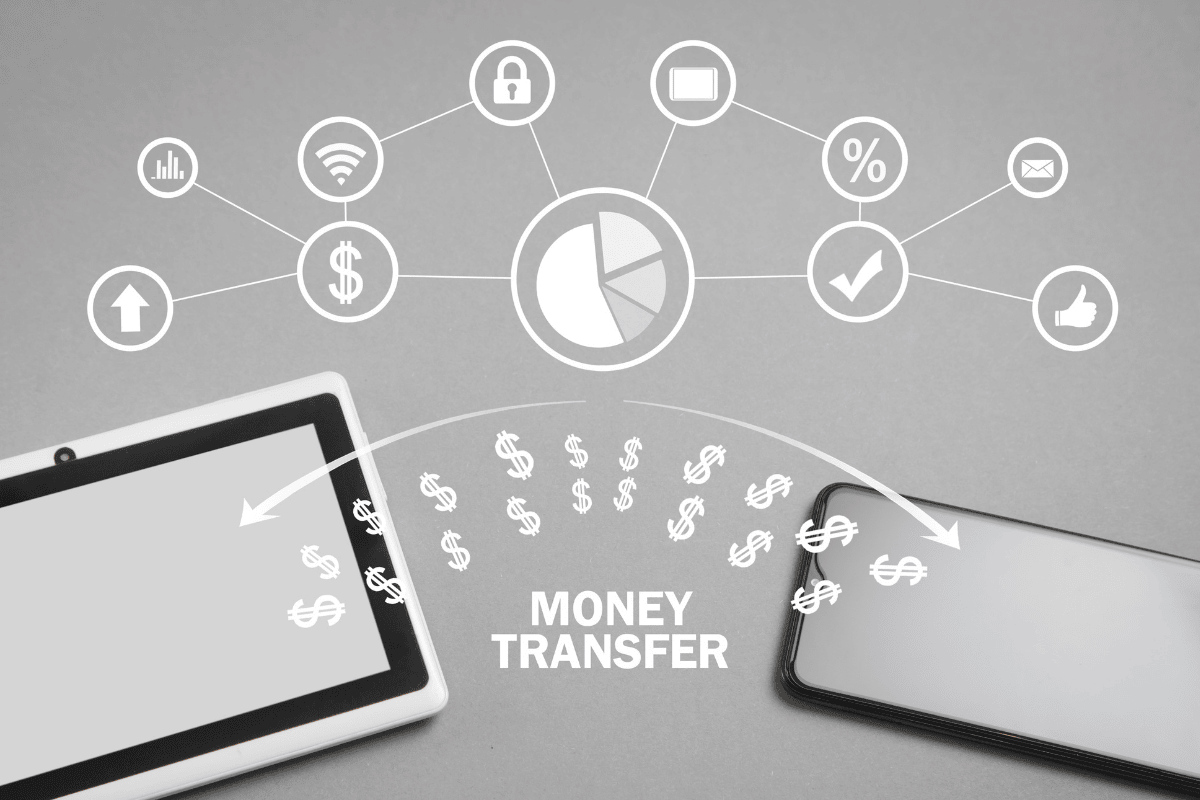Business fund transfers in the Philippines come with responsibilities, especially when large amounts are involved. For SME owners like you, understanding how much money you can transfer without reporting in the Philippines is essential to avoid delays, scrutiny, or penalties.
The Bangko Sentral ng Pilipinas (BSP) and the Anti-Money Laundering Council (AMLC) have set clear thresholds for reportable transactions. Whether you're handling payroll, paying suppliers, or receiving foreign investments, staying within these limits helps keep your operations smooth and compliant.
In this blog, you’ll learn the current reporting rules, documentation requirements, and tax implications around fund transfers, so you can manage transactions with clarity and confidence.
Regulations on Money Transfers in the Philippines
Running a business often involves moving large amounts of money. Whether you’re paying suppliers, receiving client payments, or sending funds abroad, it’s essential to understand the legal framework that governs these transfers in the Philippines.
Anti-Money Laundering Act (AMLA)
The Anti-Money Laundering Act of 2001 (Republic Act No. 9160) sets the legal foundation for tracking and reporting financial transactions that may involve illegal activity. The law applies to individuals and businesses and is enforced through the Anti-Money Laundering Council (AMLC).
The AMLC collects reports on large or suspicious transactions. It uses this data to detect money laundering, terrorism financing, and other financial crimes. Your financial activities may be monitored under this law if you operate a business with large or frequent transactions.
Bangko Sentral ng Pilipinas (BSP) Guidelines
The BSP oversees banks, e-wallets, money service businesses (MSBs), and other financial institutions in the country. These entities must implement strict customer identification processes and report transactions that reach certain thresholds.
BSP guidelines support AMLA enforcement by requiring:
- Customer due diligence (KYC: Know Your Customer)
- Monitoring of large or unusual transactions
- Submission of Covered Transaction Reports (CTRs) for transactions worth ₱500,000 or more in a single day
- Submission of Suspicious Transaction Reports (STRs) for transactions that lack a clear legal purpose, deviate from the customer's profile, or appear structured to avoid detection, even below the ₱500,000 threshold
Reports must be submitted to the AMLC within five (5) working days of the transaction or suspicion.
In addition to banks and MSBs, AMLA covers real estate brokers, casinos, insurance firms, securities dealers, and virtual asset service providers (VASPs).
Failure to comply can result in fines from PHP 100,000 to PHP 500,000 and/or imprisonment from six months to seven years.
Institutions Involved in Monitoring Transfers
In the Philippines, several regulatory bodies and financial institutions work together to ensure that all high-value or unusual transactions are monitored and reported properly under the Anti-Money Laundering Act (AMLA).
Here’s how the process works:
- Banks, e-wallet providers, and money service businesses (MSBs) are responsible for conducting due diligence, monitoring transactions, and submitting reports when thresholds are met.
- Other covered entities, such as real estate brokers, casinos, insurance companies, and virtual asset service providers (VASPs), are also required to comply with AMLA guidelines.
- The Anti-Money Laundering Council (AMLC) receives Covered Transaction Reports (CTRs) and Suspicious Transaction Reports (STRs) from these institutions and investigates cases that indicate potential financial crime.
- The Bangko Sentral ng Pilipinas (BSP) acts as the primary regulator, issuing circulars, guiding compliance protocols, and imposing penalties on institutions that fail to report as required.
These regulations are not meant to hinder legitimate business activity. Rather, they are in place to protect the Philippine financial system from abuse, maintain international credibility, and ensure smoother fund transfers for compliant businesses.
What is the Transfer Limit Without Reporting?
For SMEs handling local or international fund transfers, it’s important to recognize how much money you can transfer without reporting in the Philippines. These limits exist to ensure transparency, detect unusual activity, and maintain trust in the Philippine financial system.
Proper knowledge of these limits helps avoid delays, compliance issues, or penalties.
1. Cash and Peso Transfers
Under BSP rules, individuals or businesses may physically bring in or take out up to ₱50,000 Philippine pesos across the border without prior approval. If the amount exceeds this, written authorization from the BSP is required.
This rule applies to:
- Cash
- Checks
- Money orders
- Other bearer monetary instruments
BSP approval for higher amounts is typically granted for specific use cases, such as currency testing, museum collections, or educational purposes. It’s not required for domestic peso transfers via banks or e-wallets.
Planning and securing the necessary documentation is essential if your company moves large sums in pesos across borders or through cash.
2. Foreign Currency Transfers
Without declaring it, you may bring in or take out up to $10,000 (or its equivalent in other foreign currencies). You must complete a Foreign Currency Declaration Form if the amount exceeds this threshold.
This rule applies whether the money is in cash or other bearer instruments, such as:
- Cash (foreign currency)
- Traveler’s checks
- Bank drafts
- Notes
- Bonds
- Money orders and other bearer instruments
The form must be submitted to the Bureau of Customs at your port of entry or exit. This requirement is outlined under BSP Circular No. 98, Series of 1995, but enforcement is handled by Customs authorities, not banks or the BSP.
This rule applies only to physical cross-border movements of foreign currency, not to local bank transfers or digital remittances within the Philippines.
For businesses working with international suppliers or investors, proper declaration avoids delays, questioning, or confiscation. Declaring the amount does not block the transfer, it simply ensures legal compliance with customs protocols.
3. Thresholds that Trigger Reporting
Beyond BSP declaration rules and customs procedures, banks and other covered institutions are legally required to report certain transactions to the Anti-Money Laundering Council (AMLC) under the Anti-Money Laundering Act (AMLA). These reporting obligations help detect and prevent illicit activity while keeping compliant businesses protected.
Banks must file a Covered Transaction Report (CTR) when:
- The transaction involves more than ₱500,000 (or its equivalent in foreign currency) in cash or similar instruments, in a single banking day.
- The transaction is conducted by a single client or through multiple linked accounts.
This reporting applies even if the transfer appears legitimate, as long as the amount meets or exceeds the threshold.
Suspicious Transaction Reports (STRs) must be filed when:
Separately, a Suspicious Transaction Report (STR) must be filed regardless of the amount when red flags are present, such as:
- The transaction has no clear lawful or economic purpose
- The activity appears structured to avoid CTR reporting (e.g., multiple ₱490,000 deposits)
- The customer provides false, inconsistent, or fictitious identification
- The transaction involves high-risk individuals (such as politically exposed persons or sanctioned entities)
These triggers reflect deviations from normal customer behavior and are reviewed closely by financial institutions before reporting to the AMLC.
Maintaining proper records, verifying customer information, and complying with reporting thresholds ensures your business transactions proceed smoothly, without delays or regulatory scrutiny.
Once you know the limits, the next step is ensuring you have the right documents to support your transfer.
Also Read: How Do Interest Rates Work in The Philippines, And What Are Their Types
Documentation Requirements for Money Transfers in the Philippines
Whether transferring money domestically or internationally while in the Philippines, you must comply with specific documentation requirements set by the Bangko Sentral ng Pilipinas (BSP) and the Anti-Money Laundering Council (AMLC).
Understanding how much money you can transfer without reporting in the Philippines ensures you submit the right documents, helping monitor large transactions and prevent unlawful financial activities such as money laundering.
Here are the key documentation requirements to be aware of:
- Valid Government-Issued ID: A valid ID is required for both senders and recipients as part of the standard Know Your Customer (KYC) process, especially when transacting with banks and remittance centers. This helps verify the identity of individuals involved in the transaction and is part of the KYC process mandated by financial institutions.
- Source of Funds Declaration: Banks and money transfer services may request documentation that proves the source of funds, such as payslips, employment certificates, or business income records, for transfers exceeding reporting thresholds. This measure ensures the legitimacy of the transferred funds and is especially important for large or suspicious transactions.
- Purpose of Transaction: For larger transactions, especially those over ₱500,000, banks may ask for a written declaration explaining the purpose of the transfer, such as loan repayment, tuition, or investment. Separately, for cross-border foreign currency transfers above USD 10,000, you must complete a Foreign Currency Declaration Form and submit it to the Bureau of Customs.
- BSP Approval: If a transaction involves transferring more than PHP 50k in physical cash out of the country or sending certain foreign investments abroad, prior written approval from the BSP is necessary. This rule regulates large fund transfers to prevent capital flight and illegal transactions.
The above-listed documents are a must-have for an SME business to ensure smooth money transfer. In addition to meeting the necessary documentation requirements, knowing the tax implications of various fund transfers is crucial, as these can impact your business finances.
Also Read: Understanding Net Revenue: Definition, Formula, and Calculation
Tax Implications for Fund Transfers in the Philippines
SME business owners must know the tax rules tied to local and international fund transfers. Whether you receive payments, repatriate profits, or send capital, the tax treatment depends on the transfer's purpose, source, and amount.
1. Income Tax on Remittances
Personal remittances from abroad, particularly those sent by Overseas Filipino Workers (OFWs), are generally not subject to Philippine income tax if they represent compensation earned overseas.
However, if the remittance represents payment for services rendered, business income, or commissions, not a personal gift, it may be taxable and must be declared accordingly. Under the TRAIN Law, personal income tax rates in the Philippines range from 0% to 35%, depending on the taxpayer’s income bracket. If taxable remittances (such as business-related payments) are not reported, the recipient may face:
- 25% surcharge on the unpaid tax plus
- 20% annual interest until full payment is made.
Always document the transaction clearly if you're sending or receiving business-related payments. Businesses should record incoming funds in their books and declare them in their tax filings.
2. Capital Gains Tax
If you transfer money into the Philippines to invest in assets like stocks, property, or businesses, be aware of capital gains tax implications when you eventually sell those assets. The tax is applied only when you realize a gain, not at the time of transfer.
The capital gains tax rates in the Philippines are:
- Real Property: 6% of the gross selling price or fair market value, whichever is higher.
- Shares of Stock Not Traded on the Philippine Stock Exchange: 15% of net capital gains.
SME owners planning to invest or expand into local ventures should consider these rates when estimating potential returns.
3. Estate Tax
Estate tax becomes applicable when an individual passes away, leaving behind assets such as real estate, cash, investments, or business interests. It is a tax on the right to transfer these assets to heirs, not on the assets themselves.
In the Philippines, estate tax is levied at a flat rate of 6% on the net estate, whether the deceased was a resident or not. The net estate is determined after deducting allowable amounts, including a ₱5 million standard deduction, up to ₱10 million for a family home, and certain debts, medical, and funeral expenses. With proper planning, estate taxes can be minimized, helping ensure a smooth transfer of assets.
4. Donor’s Tax (Gift Tax Equivalent)
In the Philippines, gifts exceeding ₱250,000 in one calendar year are subject to a 6% donor’s tax. This applies to cash or non-cash gifts, regardless of the relationship between the giver and recipient.
If your business receives a significant gift or capital infusion from an individual, that transaction might trigger this tax. The recipient is responsible for reporting and paying the tax in such cases.
5. Remittance Taxes
Personal international remittances, such as those sent by OFWs, are not subject to income tax in the Philippines.
For businesses, some money sent abroad as profits may be taxed at 15%, depending on the type of transaction. Money sent as capital or loans usually isn’t taxed. It’s important for businesses to classify these payments correctly to avoid problems with taxes.
Also Read: Starting a Successful Money Lending Business in The Philippines
5 Practical AMLA Compliance Tips for Philippine Businesses
Staying compliant with the Anti-Money Laundering Act (AMLA) isn’t just a regulatory requirement; it’s critical for protecting your business from legal and reputational risks. Whether managing local or international transactions, following AMLA rules helps ensure your business avoids fines and continues operating without disruption.
Here are five key ways SMEs in the Philippines can stay compliant:
1. Stay Updated on Regulatory Guidelines
Keep track of the latest policies and rules issued by the Securities and Exchange Commission (SEC), Bangko Sentral ng Pilipinas (BSP), and the Anti-Money Laundering Council (AMLC). These agencies regularly issue circulars and updates directly affecting how you handle financial transactions, customer verification, and recordkeeping.
Failing to align with new policies, even unintentionally, can lead to violations and potential penalties.
2. Review Your Data Handling Under the Data Privacy Act
AML compliance goes hand in hand with data protection. Under the Data Privacy Act of 2012, businesses must safeguard personal and sensitive information when collecting, processing, and storing customer data.
Before conducting customer checks or reporting suspicious activity, ensure your data management policies meet legal standards. This includes getting proper consent from customers and securely handling any information gathered during due diligence.
3. Use a Risk-Based Approach to Monitor Transactions
AML compliance is about knowing your customers and monitoring their transactions regularly. Watch for:
- Frequent or unusually large transactions
- Activity that doesn’t match the customer’s business profile
- Attempts to avoid reporting thresholds
- Deals linked to high-risk countries or individuals
Set up monitoring systems that flag these patterns so you can report them quickly and accurately.
4. Screen Customers Against Sanctions Lists
Before entering a business relationship, screen your customers against local and international sanctions lists. These include databases from the AMLC, BSP, Office of Foreign Assets Control (OFAC), and the United Nations.
Since the Philippines is currently on the FATF greylist, global partners may require proof that your business takes AML compliance seriously. Regular sanctions screening helps reduce risk and builds trust with local and international clients.
5. Conduct Proper Customer Due Diligence (CDD)
At the start of any business relationship, verify your customer’s identity and understand the nature of their business. If the customer presents a higher risk, such as being a politically exposed person (PEP) or having links to adverse news, apply enhanced due diligence (EDD).
Maintain accurate records and update customer profiles over time. This helps detect any red flags that emerge after onboarding and ensures long-term compliance.
AML compliance isn't optional, especially in today’s increasingly regulated environment. For SMEs in the Philippines, following these five practices reduces risk and strengthens your business’s credibility with banks, partners, and regulators.
Final Note!
Staying informed about how much money you can transfer without reporting in the Philippines is crucial for business owners, whether transferring funds locally or internationally. Knowing the reporting thresholds, required documentation, and tax implications ensures your transactions remain smooth and legally compliant. Adhering to these guidelines helps avoid complications and legal risks.
As a business owner, dealing with the complexities of these regulations can seem overwhelming, but with the proper guidance, it doesn’t have to be. This is where NBFIs like n90 come into play.
We support SMEs in the Philippines by providing:
- Bridge Loans: Short-term funding to cover urgent business needs or cash flow gaps
- Small Business Loans: Flexible financing to manage operations, inventory, or expansion
- Invoice Factoring: Access funds tied up in receivables for better liquidity
We also help structure your fund movements in line with BSP and AMLA regulations, potentially lowering risk and tax exposure.
Need clarity and confidence in managing your next fund transfer?
Contact us today to discuss how n90 can support your financial goals.
FAQs
1. Can multiple smaller transactions be flagged if they appear structured to avoid reporting thresholds?
A: Yes. Financial institutions monitor this practice, known as "structuring" or "smurfing. " Even if individual transactions fall below the reporting limit, a pattern of frequent, fragmented transfers intended to evade reporting requirements may trigger a Suspicious Transaction Report (STR).
2. Do online platforms and fintech apps have the same reporting obligations as traditional banks?
A: Yes. The BSP regulates digital wallets, remittance apps, and fintech platforms in the Philippines and requires them to comply with AMLA requirements, including KYC processes, transaction monitoring, and reporting of covered or suspicious transactions.
3. What is the law regarding secrecy for banks in the Philippines?
A: The Bank Secrecy Law in the Philippines, primarily Republic Act No. 1405, ensures that all bank deposits are confidential and cannot be disclosed to any person, government official, bureau, or office. The primary purpose of this law is to encourage depositing money in banking institutions and discourage private hoarding. Banks can utilize these funds for authorized loans to assist the country's economic development.













